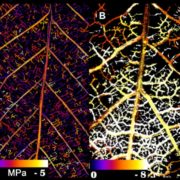
Low Xylem Vulnerability in Oaks
Under conditions of drought stress, the continuous column of water in the plant xylem experiences increasing tension caused by declining water potential at the sites of evaporation. Eventually, air is drawn into the water transport system, forming embolisms in the xylem conduits. Although plants have…
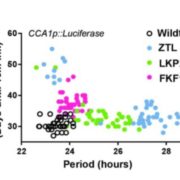
New Insights into the Molecular Biology of Plant Circadian Rhythms
The circadian clock is an endogenous timekeeper that synchronizes essential biological processes with the outside world. Eukaryotic clocks rely on the ubiquitin proteasome system to target core clock factors for degradation. Altering clock protein degradation can change the period length of the clock.…
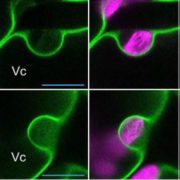
Selective Chloroplast Microautophagy
When plants are exposed to excessive light, photoinhibition occurs and chloroplasts become damaged. Photodamaged chloroplasts undergo vacuolar digestion through a poorly understood autophagic process called chlorophagy. In general, cell biologists recognize two types of autophagy: macroautophagy and…
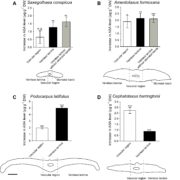
ABA Biosynthesis Occurs in the Mesophyll
The plant hormone abscisic acid (ABA) plays a critical role in enhancing plant survival during water deficit. While there is no doubt that ABA is a carotenoid derivative and that carotenoid cleavage occurs in the chloroplast, uncertainty remains about which tissues are responsible for synthesizing ABA.…
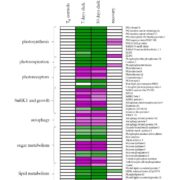
How Does a Plant Tolerate Prolonged Darkness?
The exposure of plants to prolonged darkness leads to the exhaustion of starch reserves and carbon and energy starvation. In such cases, plants must use alternative nutrient and energy sources to survive. Autophagy is an important mechanism that breaks down proteins and lipids and thereby provides the…

Update: Cation/H+ transporters affect membrane trafficking
By Heven Sze and Salil Chanroj.
Plants remodel their cells through the dynamic endomembrane system. Intracellular pH is important for membrane trafficking, but the determinants of pH homeostasis are poorly defined in plants. Electrogenic proton (H+) pumps depend on counter-ion fluxes to establish…
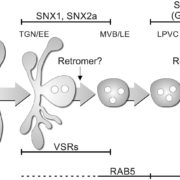
Turnover of Tonoplast Proteins
By Rumen Ivanov and David G. Robinson
Our knowledge of vacuole biogenesis and the transport of proteins to the vacuole has advanced consistently over the last 30 years. In meristematic cells, the tonoplast appears to develop directly out of the endoplasmic reticulum (Viotti et al., 2013). Once it is…
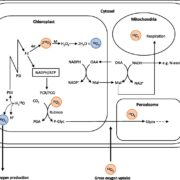
Photosynthetic Oxygen Production: New Method Brings to Light Forgotten Flux
Oxygen (O2) is evolved during photosynthetic electron transport when water is split by the oxygen-evolving complex to provide protons and electrons to the chloroplastic electron chain, thereby generating ATP and NADPH—the energy source and reducing power for plant metabolism. The majority of this chemical…
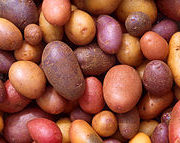
Improving on the Humble Spud
The humble spud. Simple, unassuming, yet vital in supporting a large proportion of the world’s population. Historically speaking, much of the research performed on potatoes (Solanum tuberosum) has gone into enhancing their disease resistance, justifiably so given the severe famines brought about through…

